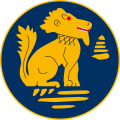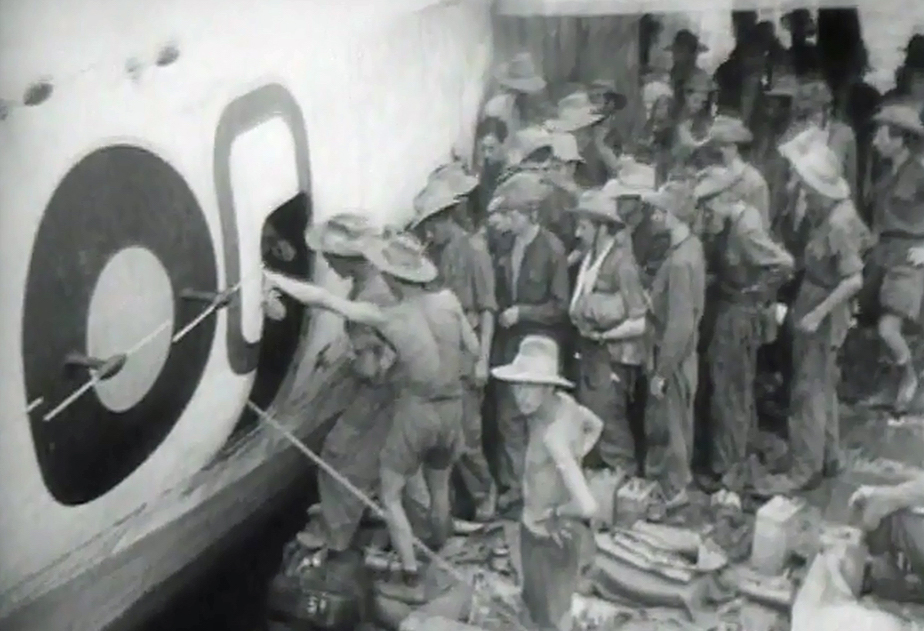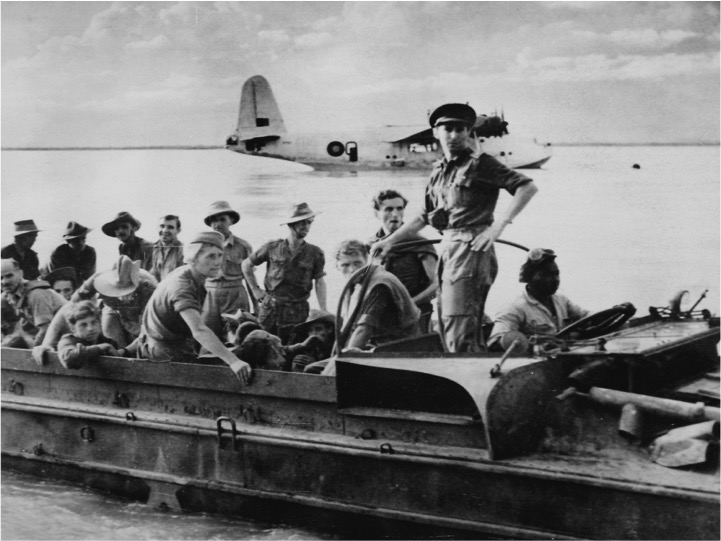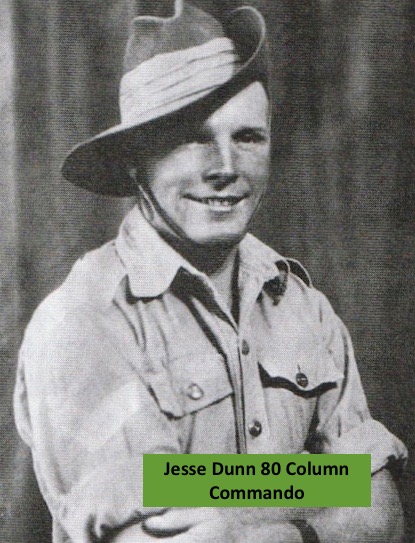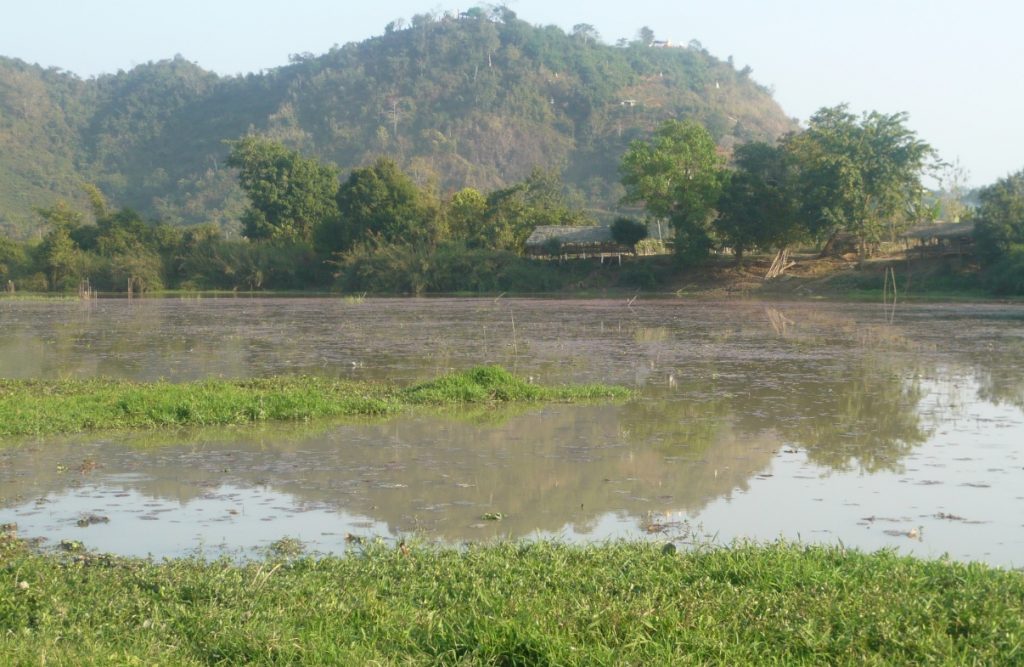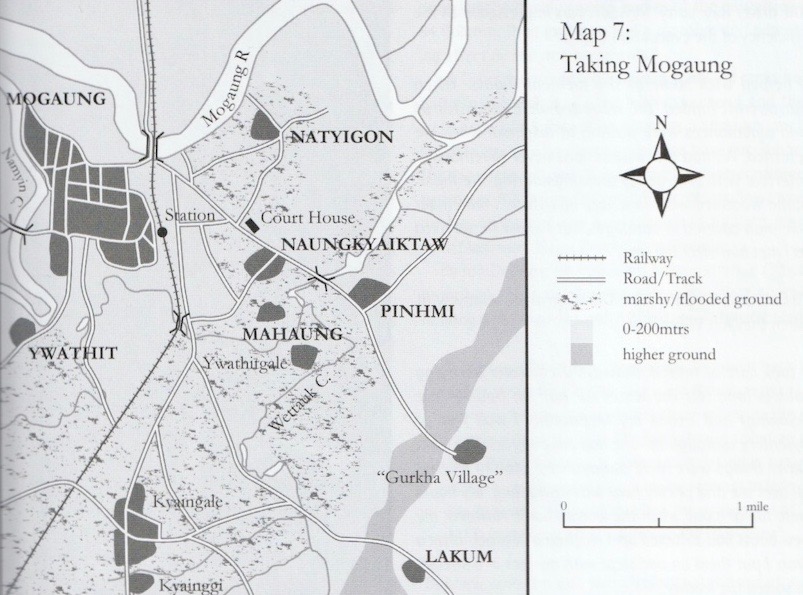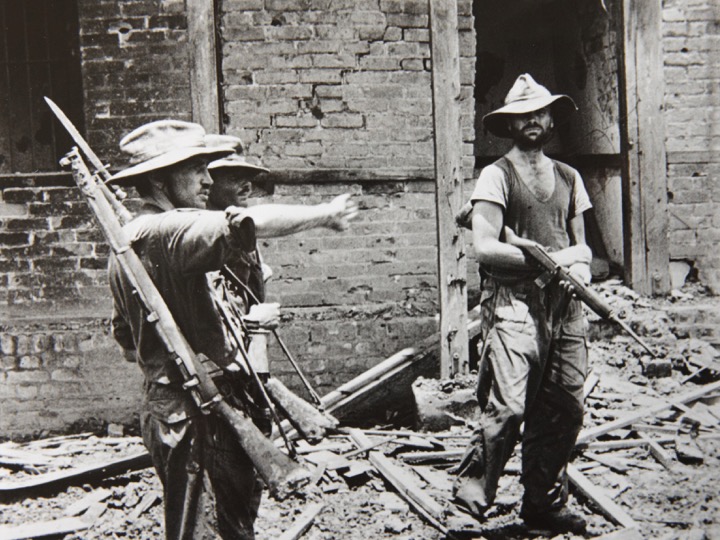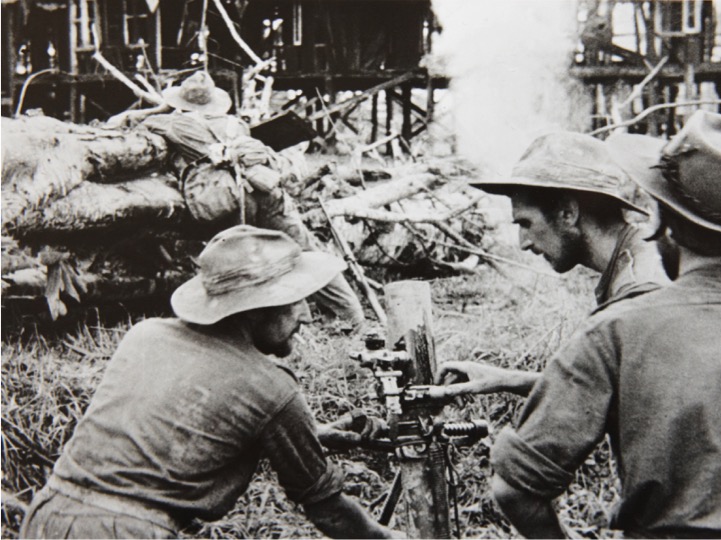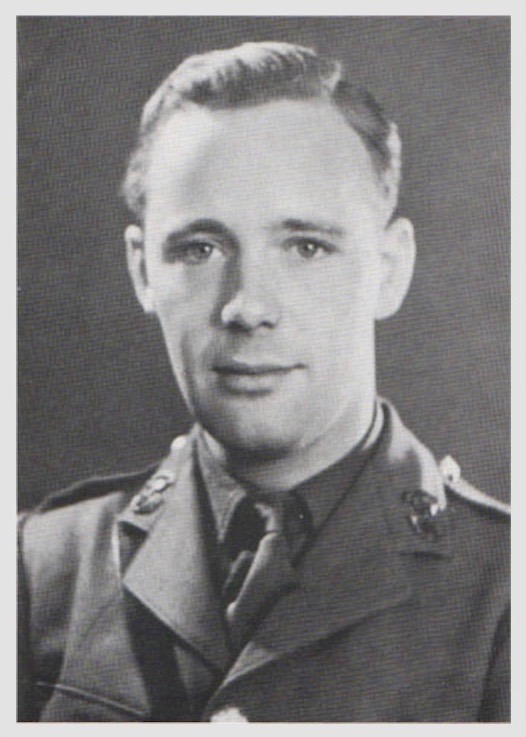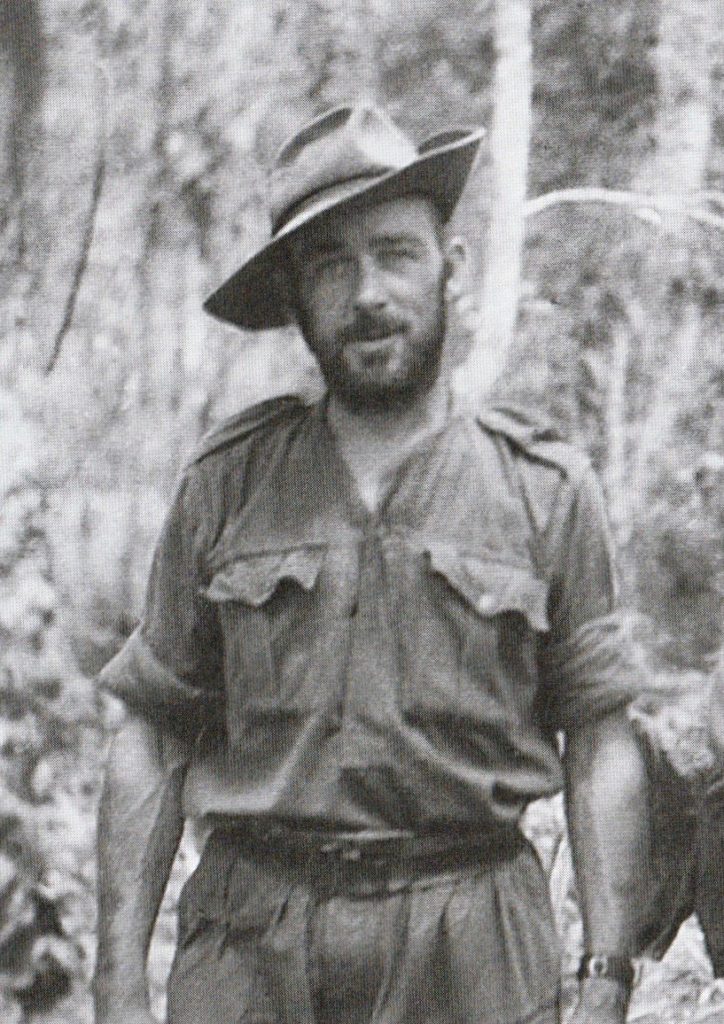REMEMBERING OPERATION THURSDAY 75 YEARS ON
Wingate was dead. An Anglophobe American General now had charge of the Chindits – for whom he had little but contempt. The monsoon was in full swing and the numbers of battle casualties and sick began to mount. Lentaigne, the British Commander of Special Force, had no faith in Chindit warfare. The main bases used by the Chindits were abandoned for logical reasons but the move north began badly with the loss of Blackpool Block, overcome by strong Japanese forces. Most of the Chindits had been behind enemy lines, living rough in the jungle, for over three months. The decisions now taken were catastrophic in terms of loss of life and the continued erosion of Special Force’s fighting capacity.
—ooo—
Blackpool’s 111 Brigade survivors headed for their rallying point of Mokso Sakan, just four miles from Indawgyi Lake. They withdrew around Indawgyi Lake’s southern shore, whilst 14 Brigade elements held the Kyunsalai Pass, 6NR’s 66 Column held another pass and 39 Column sealed the tracks from Mokso to the main pass. The plan was for 111 Brigade to continue to Lonton, to be joined by 66 Column, with 39 Column to the rear. The wounded and sick would be flown out by Sunderland flying boats operating from the lake or by light aircraft from Mokso’s strip.
Jack Masters, 111 Brigade Commander, expected things to get worse. There were some 350 wounded and sick awaiting evacuation. Their numbers were increasing at an alarming rate after two weeks of monsoon rain and little or no food. Morale had reached a low ebb.
Yet, there were still flashes of aggression from the Chindits, despite their parlous condition. On May 27, 77 Brigade blew the railway in three places north of Taungni. Stilwell, however, could not be satisfied. He complained about Morris Force’s failure to reach Waingmaw, opposite Myitkyina.
When on their way to Mokso Sakan, Cameronian Norman Campbell and a dozen others from 90 Column became separated from the main body. They struggled on alone and without food. Campbell began to fantasise about food: “I was like a car with a duff battery, that could no longer hold a charge.” They struggled to complete the final stretch to Mokso: “Each day my strength ebbed away a little quicker on the march. Luckily, we found the main body again on the sixth day. We stood there, stark naked, and dried our clothes by a fire of sodden bamboo. I reported to Captain McLean. Typically, when he found I had nothing other than a carbine, he cut his own blanket in two and gave me half. He also gave me some of his very small store of food.”
Peter Heppell, an 82 Column NCO, had reached the outer limits of endurance: “I don’t know whether it was the cold or the aftershock, but I was shivering all over. We had very little to eat but made a fire for tea. Some men cut banana leaves and we huddled together in the mud, under the leaves. They put me in the centre, to try to stop that awful attack of trembling.”
Many decades later, Blackpool’s survivors found warm words for the Nigerians waiting for them at Mokso. They had cut steps into the final steep, muddy hillside. Food supplies were meagre. On arrival, after provision for the wounded, each man received just two K-ration meal packs.
On May 30 work was under way to establish two flying boat bases on the lake – there was no area nearby suitable for use as a Dakota strip. The following day 111 Brigade received orders to protect the northern half of the lake, whilst 14 Brigade were given responsibility for the southern sector.
Blackpool’s survivors were reorganised; columns were merged, forming composite columns, as was the case with the King’s Own and Cameronians. Desperately-needed supplies came in via a huge airdrop. Meanwhile, men continued to suffer during their patrols around Indawgyi Lake. Bill Towill, 3rd/9th Gurkhas’ Adjutant, remembered: “At about this time I noticed that some British troops were dying. They weren’t wounded or suffering from any illness, so this was very puzzling. I asked our MO what the trouble was. He said the men had suffered more than they could take and, so to speak, had ‘turned their faces to the wall’ and given up on life.”
On June 1 Morris Force attacked Waingmaw, as ordered by Stilwell. They had some success but withdrew when their ammunition ran low. In the Kyunsalai Pass, 14 Brigade and the West Africans continued to cooperate. Defences in the pass were reorganised on May 31, to improve the chances of holding a major assault. York and Lancaster Administrative Officer Paddy Dobney visited the pass for the second time and was pleased to note that the slit trenches had been deepened. The men, however, were at the end of their tether. One individual was caught asleep with the nearest Japanese just 50 yards away; he agreed to be flogged. The Japanese were desperate to squeeze the Chindits out of the pass but the York and Lancaster Columns held on, before being relieved by 12 NR’s two columns. When the West Africans came up, they were ordered to clear the area with the bayonet. Unfortunately, the entire area was covered in dense jungle and Japanese snipers infiltrated with ease.
When pressed for a date to attack Mogaung town, as ordered by Stilwell, 77 Brigade Commander Michael Calvert proposed June 5. His men had already endured many weeks of savage fighting at White City and they were not equipped or trained for the role of assault troops.
—ooo—
Saving the Chindit sick and wounded became an operational priority. The light aircraft strip at Mokso Sakan began flying casualties to Shadazup, for onward transit by Dakota to hospitals in India. During the first few days of June the supplies position at Mokso improved but the numbers of sick requiring evacuation grew at a frightening rate. The area was too waterlogged for C-47 operations. Much depended on the two Sunderlands operating from Indawgyi Lake. The Sunderlands, from 230 Squadron in Ceylon, were withdrawn from anti-submarine patrols and flew to the Brahmaputra river in northern Assam. They made 13 successful sorties to Indawgyi Lake, bringing out around 500 Chindits, many of whom would have otherwise died. They took around 40 wounded and sick per trip, but one aircraft was damaged and the other soldiered on alone.
Those waiting to be flown out were taken from Mokso’s makeshift hospital to the lakeside, to save time. York and Lancaster commander Philip Graves-Morris later wrote: “It was distressing to see these disappointed and dying men carried back again in the evening, when aircraft failed to arrive.” Malaria cases spiralled after Blackpool and the sudden release of tension on reaching Mokso Sakan. “Doc” Whyte, 111 Brigade’s MO, told the Brigade Commander, Jack Masters, that most of his men were on the threshold of death from exhaustion, undernourishment, exposure and strain. Men died from the least physical exertion.
Despite the best efforts, the numbers awaiting evacuation stayed at between 250 and 350 as the pace of evacuation slowed and Mokso’s light aircraft strip became waterlogged. Paddy Dobney, with the York and Lancaster’s 84 Column, noticed a sharp rise in the numbers of sick. Severe cases of malaria and typhus filled the rudimentary hospital. The small cemetery expanded as men passed beyond help and died. NCO Peter Heppell, with the King’s 82 Column, didn’t think much of the way the wounded and sick were selected for evacuation: “I got the impression that those who limped the most were flown out. Naturally there was a temptation to ‘improve your chances’. There were an awful lot of heavily bandaged legs around and I can’t say I blame them! Morale was very low.”
Some men’s lives were threatened for unlikely reasons. Captain Neville Hogan, Recce Platoon Commander with the King’s Own’s 46 Column, was in a group that had sheltered under a collapsed basha after Blackpool’s fall: “We crawled under it and settled down to sleep. During the night I was bitten by Bandicoots, large rat-like animals with powerful fangs. I was bitten five times – the first three woke me up and I really felt the last two. These bites turned into pus-filled boils. I developed a high temperature and then went down with typhus.” Evacuated by Sunderland to a hospital in India, he was given MKB 693, a precursor to penicillin. “There were five men in my small ward and the other four died.”
—ooo—
Brigadier Calvert’s 77 Brigade Chindits were locked into hard fighting during their advance to Mogaung. His stores request for the main assault on the town included 5,000 3 in. mortar rounds, but expenditure was to be much higher. On June 3 they seized Japanese positions at Tapaw Ferry. A unit of paratroopers dropped, together with river crossing equipment. They were now in a position to cross the Mogaung river and establish an evacuation route to Myitkyina, should it be required. During June 5-8, the Brigade took Pinhmi and secured a bridgehead over the Wettauk Chaung. Casualties were heavy on both sides.
There were now two evacuation bases on the Lake, defended by 14 Brigade. Paddy Dobney remembered the nausea now felt when looking at a K-ration carton. They caught Lake fish, but found them full of bones and almost tasteless when boiled. Then Private Heney, Dobney’s Batman, presented him with fried fish. “I knew we had neither butter nor margarine and wondered how he had managed this culinary miracle. I was only slightly deterred when Heney told me he had used Dubbin.”
Despite the savagery of war in Burma, many Chindits retained their natural reluctance to kill an animal. Eric Sugden, of 61 Column: “One day the RAMC Sergeant handed me a live chicken and told me to cook it, feed two men and offer the broth to a third. I’m afraid I killed the bird with my machete, drew and plucked it and then cut it into joints. I boiled it up in mess tins but had great difficulty persuading the men to eat it.”
Chinese forces maintained their leisurely advance, occupying a village 15 miles north of Mogaung on 3 June. They could have reached Mogaung in two or three days but didn’t arrive until June 18. In dramatic contrast, 77 Brigade pressed on, along the Pinhmi-Mogaung Road, overcoming strong enemy defences. Resistance increased and the Japanese refused to be dislodged from Mohaung village.
Captain John Riggs and his Recce Platoon, of the Bedfordshire and Hertfordshire’s 16 Column, were now near the north-west lake shore. He was confronted with a medical crisis: “One member of my platoon, a big man, developed a high fever which I assumed was malaria or scrub typhus. All officers carried syringes and phials of quinine. Intravenous quinine sorted out even a bad case of malaria very quickly. This was the only time I administered intravenous quinine … I was anxious to remain mobile because there may have been Japanese in the area. There was no time to hang around. The results of the quinine shot were quite amazing. The man was up on his feet within 20 minutes. He could march, although his pack went on a mule. I was relieved. I had never been so close to leaving someone behind.”
Meanwhile, a new plan emerged to speed the evacuation from the lake. A large drop delivered “Ranger” rubber boats and 22 hp outboard motors. Engineers then began to build the “Chindit Navy”, large powered rafts capable of taking 40 men and known as “Dreadnoughts”. Each raft consisted of five Ranger boats lashed together, with a bamboo superstructure and two outboards. Over the next two months over 1,000 wounded and sick were transported along rivers to evacuation airstrips.
The men of 111 Brigade continued their recovery, re-equipping in readiness for more weeks of campaigning. Captain Miller, the King’s Own Chaplain, saw a new consignment of mortars arrive, leaving him with no doubts about what was to follow. On June 8 111 Brigade was ordered to move on Mogaung from the west.
Sickness overwhelmed many as the monsoon continued. Lieutenant Denis Arnold was with 7NR’s 29 Column: “I had malaria most of the time, together with dysentery and prickly heat. Eventually, my discomfort was completed by the onset of scrub typhus and several days with a temperature of up to 107 deg. Scrub typhus brought some men so low that they shot themselves.
“By this time food was so short that dead mules were eaten; the meat was almost inedible but the broth helped keep us alive. The most edible portion of a mule is the liver. I remember being presented with a chunk of liver on one occasion.”
The build-up for the Mogaung attack continued. The South Staffords linked up with the 3rd/6th Gurkhas on June 1. Calvert, commanding 77 Brigade, and the Lancashire Fusiliers reached the rest of the Brigade the next day. Japanese guns around Mogaung began shelling them and Calvert called for airstrikes to punish them. Calvert faced many challenges in planning the assault, as Mogaung is sited in a loop formed by the Mogaung River and the Namyin Chaung. The area between hills and town was heavily flooded. The only way in was along the road from Tapaw Ferry to Pinhmi. With the capture of Tapaw Ferry the South Staffords followed up, taking the high ground above Pinhmi – only 4,000 yards from the town and the rail bridge across the river.
The Lancashire Fusiliers made two attempts to capture Pinhmi Bridge at dawn on June 7. They were forced to withdraw, taking heavy casualties from concentrated machine gun fire. The road leading to the 150 ft long bridge was in clear view of the enemy, dug into an embankment on the other side. They needed another way in and the 3rd/6th Gurkhas found a ford across the Wettauk Chaung and took Mohaung village. The South Staffords took the next village and the Japanese were finally cleared from the bridge by the Gurkhas. This period of fighting cost the Chindits another 130 casualties. Calvert received information about Mogaung’s defences from a small group of prisoners. One willed himself to die, although being forcibly fed; another killed himself by eating his blanket.
—ooo—
The final phase of the 1944 Chindit campaign unfolded: 77 Brigade was to assault Mogaung from the south and east, with the Chinese 38th Division attacking from north and west. Meanwhile, 111 Brigade was to move north-east and operate in the Pahok-Sahmaw area, destroying dumps and blocking enemy movement. There was also a new task for 14 Brigade – the capture of Taungni. The Japanese had failed at Imphal/Kohima and, according to Bill Slim, were reduced to fighting a “delaying campaign” in North Burma.
At the top, feelings were running high. Stilwell accused the Chindits of abandoning Blackpool prematurely, allowing the Japanese to reinforce the Kamaing/Myitkyina sector, while Lentaigne claimed that the American General had refused him time to evacuate the sick. In late May, Stilwell had asked Mountbatten, SEAC Supreme Commander, to withdraw Special Force. Slim was left to adjudicate; he ruled that the Chindits should be allowed to reorganise and fly out their sick. They would then stay in for a short period, until Myitkyina fell – hopefully, by mid-June. This proved over-optimistic.
The best solution would have been to bring out the Chindits. Later, Slim had the grace to admit this: “It would have been wiser to take the whole of the Chindits out then; they had shot their bolt. So, too, had the Marauders, who a little later packed in completely. Both forces, Chindits and Marauders, had been subjected to intense strain, both had unwisely been promised that their ordeal would be short, and both were asked to do more than was possible.”
The men of battered 111 Brigade struggled to cope with the march north, to the hills east of Lakhren and west of Mogaung. Conditions were appalling on the three-day march to Lakhren village. From there, the best approach to Mogaung would be identified. They were making for a waterlogged, mosquito-infested area north east of the Lake. This area was also alive with Japanese units. They were required to support 77 Brigade’s attack on Mogaung, by pushing from the west as Calvert’s command advanced from the south-east. However, 111 Brigade was spent after Blackpool and many men were forced to return to Lakhren village. The area crawled with Japanese and 111 Brigade’s columns were short of ammunition and had no ability to advance or hold ground. It was the same old problem with mobile columns. The men could not carry ammunition for more than a few hours’ fighting. The answer was to sit down in a base with continuous air supply or restrict operations to lightning attacks only.
Those 111 Brigade patrols entering the flat country were soon in action and were forced to restrict their activities to the lower hill slopes. They then began to discover that their Japanese opponents were in an even worse state.
Some men held up better than most. Corporal Jesse Dunn, with 80 Column, was still relatively fit when 77 Brigade left White City: “I took care of myself. I always used water purifying tablets (and left the water for half an hour before drinking) and I took my Mepacrine. I was free of dysentery, although no-one had anything solid to pass. Other things were mere annoyances. I found leeches all over me and prickly heat was distracting. My boots were full of blood when the leeches burst. However, my new boots had softened up. I received a new pair after a drop. I put them on and slept with my feet in a stream, to soften the leather.”
Dunn witnessed a bizarre incident when the Column’s engineers laid demolition charges in a supply dump. “We were too close when they went up and were showered with debris. One chap suddenly started to yell. We couldn’t see what his problem was – until we discovered that a big chunk had landed on him and had broken his neck.”
Dunn was wounded during fighting near Mogaung. The fighting around Japanese bunkers was ferocious: “The fire was murderous. I was hit in the left arm. The round struck my elbow, travelled through my forearm and emerged at the wrist. They took me into a bamboo basha and a surgeon put me to sleep.” Dunn’s war was over; he was flown out by an L.5 light aircraft.
As the York and Lancaster columns took over positions from the West Africans in the Wabaw Bum area, they climbed from 176 ft to 3,500 ft with no flat rest areas. They then inherited two elephants used to bring forward supplies. The Mahouts refused to work for money, being interested only in opium. York and Lancaster Battalion Commander Philip Graves-Morris: “This had to be obtained as a special item in the supply drop. A small piece, about half the size of a little fingernail, would be sufficient to keep them going for three days. When the supply failed, the subterfuge of giving them half a morphia tablet seemed to work.”
Paddy Dobney, 84 Column’s Administrative Officer, had a setback. He was helping to load K-rations onto one of the elephants’ baskets when he grazed his hand on the bamboo. He ignored the small cut. His hand soon started to swell, as infection spread. Within 48 hours the hand was swollen, painful and heavily bandaged. He was unable to use his fingers.
Wingate had promised the Chindits that they would not stay in for longer than three months. The three-month mark passed and there was growing anger and bitterness amongst men who had reached the limitations of flesh and blood. The King’s Own columns were overwhelmed with the numbers of sick. The main concentration of casualties at Indawgyi Lake reached crisis point. Over 500 men had been evacuated but the outlook for those still waiting was bleak. A blunt message from the lakeside warned: “Situation critical. Men dying daily and morale at a low ebb. Unless medical supplies and food dropped immediately there will be more deaths and complete collapse in morale.”
On June 16 the Chinese captured Kamaing and this opened up a landlink for the evacuation of Chindit casualties. The 10 large Dreadnoughts of the “Chindit Navy” took casualties from Indawgyi Lake, through a labyrinth of waterways, to the Mogaung River at Kamaing. The powered rafts were then used to ferry trucks across the river for 36th Division, now advancing to relieve the Chindits.
With the casualties evacuated, 14 Brigade abandoned the Kyunsalai Pass and headed north towards Mogaung. The steamy swamps continued to take their toll within the ranks of the York and Lancaster columns. Dysentery was rife. Animals collapsed and were shot where they dropped. They reached Mokso on June 25. This much-used rallying point, consisting of four huts, was a sea of mud and detritus, decorated with black clouds of flies. Rations were being consumed rapidly in an area devoid of drop zones. Brigadier Brodie, 14 Brigade’s Commander, responded to the extreme circumstances. His men, despite their dangerously poor condition, were still expected to harass the Japanese along the railway and support 77 Brigade’s assault on Mogaung. He formed his columns into “Light Battle Groups”, free of heavy weapons and the wounded and sick, now lying together in the mud.
—ooo—
On June 12 7NR Commander Peter Vaughan felt relieved to get going. They had been at Nammun since Blackpool’s fall over two weeks earlier. This inactivity had been the cause of restlessness among Brigadier Ricketts’ senior officers. Ricketts said he would be prepared to stay at Nammun throughout the monsoon; Vaughan and others argued against this proposal, given Calvert’s needs at Mogaung – less than 40 miles away. Now, at last, the Nigerians were on the move.
However, the fighting for Mogaung town was already under way. Calvert’s force was just 800 yards away from the railway station and road bridge, but these targets were across open paddy. Attacks had been stalled by heavy machine gun fire. By June 13 Calvert’s three Battalion Commanders told him that they were now reduced to a company each through sickness, battle casualties and sheer exhaustion. Meanwhile, the Japanese were reinforcing Mogaung. Two additional Japanese Battalions entered the town during June 10-12. These concentrations were punished by Mustang air strikes. On June 13, 77 Brigade’s attacking strength totalled just 550 men, from an original strength of around 2,000. There were now 250 battle casualties clustered around Brigade HQ and half were stretcher cases. Calvert warned Lentaigne that he could not hold indefinitely in such a low-lying area. He was cleared to pull back into the hills, provided Pinhmi Bridge and Tapaw Ferry continued to be held, to await the Chinese.
The attrition continued. On June 15 Calvert and his force withdrew to Pinhmi for rest, but fighting soon resumed. On June 18 his Chindits successfully attacked the enemy positions around Naungkyaiktaw, killing over 100 Japanese, but 77 Brigade took another 50 casualties. Elements of the Chinese 114th Regiment reached the north bank and were told to secure the left flank but Calvert knew he had to get on with it, as his force continued to shrink. He would make his all-out effort to take Mogaung on June 24.
On June 20 111 Brigade joined what became a near three-week battle to take Point 2171, a commanding height across the railway valley. Point 2171 was a spur above Taungni, overlooking the Mogaung River. This vicious struggle drew in the 3rd/4th Gurkhas, 3rd/9th Gurkhas, King’s Own and Cameronians, together with the 7th Leicesters. The peak was taken but the soil was so shallow that it was difficult to dig in … and to bury the dead. There was great bitterness when the victors were ordered to pull back and the Japanese returned to Point 2171 in early July.
—ooo—
It took bitter fighting to position 77 Brigade’s combat groups for the final push on Mogaung. Long before, on June 3, Brigadier Calvert had stood on a high ridge and studied Mogaung through field glasses. The town was just two miles away. It looked difficult. He drew comfort from the capture of Tapaw Ferry, on the Mogaung River. They now had a way out if things went wrong.
In a way, his problem was straightforward. The western approach was blocked by the flooded Wettauk and Namyin chaungs. To the north was the Mogaung River and the damaged rail bridge. The way was open from the south, but it looked too obvious. Calvert decided to assault from the south-east and cross the Wettauk Chang by Pinhmi Bridge.
Firstly, the Lancashire Fusiliers took Pinhmi Village, half a dozen huts swarming with flies. The stress of no quarter jungle combat surfaced when a sick Japanese was taken prisoner. He was being badly kicked and beaten when an officer intervened and saved him. He bent down and gave the stricken man water from his own bottle. In a matter of hours, this Company Commander was shot in the spine and killed by a Japanese sniper.
Calvert took personal charge of the attack on the bridge, involving a rush without cover against positions dug into a 15 ft high embankment. The Brigadier ordered two platoons to attack straight down the road, rush the bridge and knock out the bunkers. They fixed bayonets and charged. The attackers lost heavily and withdrew back to the village. The fighting that followed was desperate and the defenders were shifted only when attacked in the rear by the Gurkhas. The Chindits lost 130 men killed or wounded in taking the bridge.
The Lancashire Fusiliers Columns, 20 and 50, lacked heavy weapons and had too few riflemen. Every yard was contested as they gradually infiltrated Mogaung’s outer defences. Small groups of Japanese fought to the death, to slow them up.
This fanatical opposition occasionally pushed men over the edge. They then went berserk. Captain Jeffrey, 50 Column’s Administrative Officer: “A Bren gunner in the leading Rifle Section lost his temper and pushed straight up the hill, firing from the hip and screaming curses at the Japanese. He was an ordinary soldier who had never been noticed much before. But there is no knowing who in battle will go mad suddenly and leave everyone gasping at his recklessness.” They had to kill every Japanese in every foxhole and trench, mostly with grenades.
By June 24, Calvert’s force was ready to launch the main attack on Mogaung. It opened with a heavy airstrike and a fierce mortar barrage of over 1,000 rounds. The line of the main road, from the rail bridge to the railway station, was secured with the help of over 50 air strike sorties. In addition, the Chinese took Ywathit and pushed towards Namyin Bridge. A Chinese claim to have taken the station proved false. Surviving elements of the Lancashire Fusiliers joined a fresh attack on the station strongpoint. Several hours of heavy fighting cost 77 Brigade around 160 casualties.
Calvert’s Brigade now encircled the town’s eastern perimeter, while the Chinese pushed from the south. The Gurkhas reached the Namyin Chaung, on the western perimeter. Mogaung was finally cleared on June 30. The Chindits handed over their positions to the Chinese 38th Division and moved into the hills east of Pinhmi. Four weeks earlier, when the Mogaung struggle had begun, Calvert had some 2,000 men. Now 77 Brigade had suffered over 1,000 battle casualties. They also had 150 seriously sick. Over 250 had been killed; over 500 were seriously wounded. More men just collapsed and died from strain, now the pressure was off.
The BBC then announced that Mogaung had been taken by Chinese-American forces. Calvert responded with his now famous signal: “The Chinese-American forces having taken Mogaung, 77th Indian Infantry Brigade is proceeding to take umbrage.” This is said to have prompted Stilwell’s staff to search in vain for “Umbrage” on their maps.
As 77 Brigade attacked Mogaung, 111 Brigade engaged Japanese units forced south by Chinese pressure in the north-east. In addition, 14 and 3(WA) Brigades were operating in the railway valley and to the north. Some elements of 111 Brigade had to rest at Lakhren due to their poor state. Some Nigerian units were now struggling on the road to Lakhren, as were the York and Lancaster sick – around 300 in all, 200 of whom were dangerously ill. An atrocious stretch of swamp barred the way to the only possible drop site. A York and Lancaster Recce Platoon tried to march around it but ran into a 200-yard barrier of 4-5 ft high elephant grass. When they tried to get through, they sank up to their waists. They managed to beat down the elephant grass into a squelchy path and eventually crossed. They then returned to help the sick and the remaining animals across. Each mule required an escort of six men, to stop it sinking.
Watching their progress was York and Lancaster Administrative Officer Paddy Dobney. Suddenly, he was convulsed with dysentery: “I had not gone 20 paces when my guts gripped me in a violent call, giving me scarcely time to wriggle out of my big pack and all my other equipment and sink down panting as the scalding flux ripped from me. I had already had two calls since dawn but this was the worst.” This was repeated twice over the next half-mile. “Dear God, where did it all come from? The last time I was so weak and exhausted I could hardly get to my feet again.”
—ooo—
Many men faced the most severe test of their lives during the fighting around and inside Mogaung. Private Jack Hutchin, of the South Staffords 80 Column, had malaria and had been wounded in the neck by shrapnel from a mortar round, in an attack on a Japanese position in the approaches to Mogaung, south east of Pinhmi.
“I got my wound cleaned up. It was a fairly open gash. They took maggots from under the saddle of a mule and bound them into the wound, to stop the onset of infection. The wound didn’t weaken me. It was more a combination of factors: hunger, exhaustion, the wound and the constant bouts of malaria, together with the extra heavy going as we pushed on to Mogaung. That track was a mudbath. Our legs sank well past the ankles. Nevertheless, I reached Mogaung and took part in the hard fighting there. When we marched away from Mogaung I was in a state of delirium.
“There came a point when I could go no further. I sat on a bank, near a tree. I was given an extra water bottle, a spare clip and one K-ration meal. Nothing much was said. No regrets were expressed. I looked at my legs and they were covered in deep jungle sores. My will had gone. That was that. I was finished and would never see my home again.
“I don’t remember much else. I must have lost consciousness. I do remember waking to find myself surrounded by soldiers. I thought they were Japanese but had the wit to realise that I’d be dead if that had been the case. They were Chinese and, in my demented state, there seemed to be hundreds of them. One looked down from the bank and started to laugh. He may have been trying to encourage me but I was overcome with fury. I got up, found my rifle and struck him hard on the side of the neck with the butt. I have no recollection of what happened immediately afterwards, but I had found a spark. I began marching and caught up with the tail of the Column three days later … I knew then that I would survive.”
On June 30 77 Brigade was instructed to stay put, pending evacuation, but three other Special Force Brigades were expected to do more and received fresh orders. 14 Brigade was to attack enemy units in the Pinlon-Pinbaw area, while the Nigerians would concentrate for a July 8 attack on Pyindaw. 111 Brigade was ordered to attack an occupied village, while Morris Force was to continue offensive patrolling. York and Lancaster Administrative Officer Paddy Dobney wrote about the arrival of the “soft skin” Battalion elements at Lakhren: “Such was the weakened state of everyone and so vicious was the local strain of malaria and typhus that a man could be mobile one day and dead 48 hours later.” On the trek to Lakhren, a sick man had to have a temperature of 104 deg. to be carried by one of the four remaining ponies and the elephants. Dobney saw relatively fit men “adopting” those now past helping themselves. Dobney’s boots then disintegrated – he bound them up with string.
On June 30 SEAC Supreme Commander Lord Louis Mountbatten, together with Special Force Commander Joe Lentaigne, visited Stilwell’s headquarters, seeking agreement on arrangements for withdrawing Special Force. Stilwell opposed this but Lentaigne said 77 and 111 Brigades each had only 350 men capable of fighting. Stilwell continued to argue and, in what was widely regarded as a gross insult, Lentaigne agreed that these Brigades would remain in until Taungni was taken, when there would be a joint Anglo-American medical inspection of the Chindits. The meeting finished with two very different perceptions. Lentaigne believed he now had clearance for evacuation, whereas Stilwell continued in the belief that the Chindits would go nowhere until he was ready.
Accordingly, 111 Brigade was ordered to support the West African advance along railway valley, with a village north of Taungni as the immediate target. The wounded and unfit would be spared this ordeal. Masters worried about a possible repeat of the horrors of Blackpool. If they took that village, how would they hold it?
The hunger was appalling. Charles Carfrae, of 7NR’s 29 Column, later wrote: “Supply drops became hopelessly irregular; for three or four days in succession we subsisted on herbs, boiled to make a thin and tasteless soup. Any man who had saved a biscuit or morsel of cheese from the last ration drop would shrink out of sight to eat it, unable to withstand the involuntary gaze of less provident comrades.”
On 4 July, Nigerian Chindits (66 Column) reached Padigantawng. Some of the men with bad footrot could go no further and joined the concentration of casualties and sick at this village. The others, on their last legs, pushed on to Pahok. Meanwhile, Paddy Dobney, with 14 Brigade’s 84 Column, had an unusual birthday present. He had his first solid bowel movement for two months … “alas, it was a flash in the pan – or, rather, the mud – for the next day it was business as usual …”
Dobney then saw a man commit suicide: “A rifle muzzle placed in the mouth, a quick jab on the trigger and another poor wretch was past the reach of any more jungle, rain and Japanese. In the bivouac that morning, a Subaltern from another column had rolled on a grenade and blown himself to oblivion.”
The Brigade was due to be relieved. Dobney was ordered to prepare a staging post near Pahok. While sitting in a small hut with some Americans, being plagued by flies, Dobney saw his first aerosol can of fly killer. He was most impressed.
—ooo—
With Mogaung taken, Stilwell wanted more from the Chindits. Elements of the Japanese 18th and 53rd Divisions, retreating from Mogaung and Kamaing, established new strongpoints west of the Namyin River, to block the Chinese advance south. The key defensive positions were “Point 2171” and “Hill 60”, west and north of Sahmaw.
Efforts intensified to evacuate the growing numbers of wounded and sick. Light aircraft were fitted with floats, to join the Sunderlands still flying out casualties. On July 7 a small team parachuted in near Lakhren, to speed up the evacuation by “Dreadnought” rafts. On this day, Calvert took up the offer of marching his survivors north and flying out from Myitkyina.
The campaign now began to disintegrate. 14 Brigade fought small-scale but successful actions and captured Hkawan on July 10. The Nigerians pushed on, with orders to take Pyindaw and link up with Chinese forces to the north. They attacked Pyindaw on July 11 and, after a brief battle, discovered they were fighting the Chinese. From July 8-18, 111 Brigade took part in hard fighting around Point 2171 – its last major objective. This high feature overlooked railway valley to the east and dominated the approaches to Taungni. Some 111 Brigade elements had remained at Lakhren. Cypher Operator Norman Campbell, with the Cameronians’ 90 Column, witnessed the demise of a Burmese who came into the camp, demanding weapons to fight the Japanese. He was promptly denounced as a collaborator by a fellow Burmese: “He was taken away by a Sergeant who had been handed a Thompson sub-machine gun by an officer with the words: ‘Try this. I’ve never used it’. We heard a burst of fire. The Sergeant then returned and gave the weapon back with the words: ‘It works’.”
14 Brigade’s York and Lancaster Columns fought their last battles during the second week of July; 84 Column’s grossly reduced Battle Group totalled just 112 all ranks. Nevertheless, they had orders to attack a Japanese post near Saunghka. On arrival, they found the enemy gone but the men had spent their final stock of vitality. Later, York and Lancaster Battalion Commander Lieutenant-Colonel Graves-Morris wrote: “Our Medical Officer spared no efforts to alleviate the state of the sick and dying, but in many cases they were past medical aid. There appeared to be no antidote for typhus. Mepacrine scarcely subdued malaria and if they had had a cure for dysentery and rampant diarrhoea, they would have used it on themselves. Their total medical equipment was in two panniers – one mule load.”
By now the mobility of all Chindit Columns was much impaired. Many men had problems with soft, swollen feet. Men who removed their boots often couldn’t get them on again. Then they continued in socks, with puttees wrapped around their feet. A virulent form of prickly heat attacked them. Their bodies were spotted with boils and jungle sores. Graves-Morris: “Some of these, as big as teacups, refused to respond to treatment. They spread with alarming rapidity and attracted a black ring of flies if exposed for any length of time. Due to lack of condition, the men’s normal bodily resistance to skin sores was at a low ebb and made them easy targets for infection.” There were also problems with the weapons, particularly a lack of oil. When the Brens failed, the men took needless casualties.
Before the 3rd/9th Gurkhas assaulted Point 2171, Animal Transport Officer Bill Smyly visited the Chinese: “They came from north China. I met men from Shantung Province – where I had grown up – and heard their familiar dialect once again.”
The Chinese Commander wanted Smyly to join his officers for an evening meal: “One dish seemed to arouse both amusement and embarrassment. When it was offered I helped myself and said, ‘Very good!’ There were giggles. Someone said, ‘Monkey’ and the others laughed. Oddly enough, in all my time in Burma over two years I do not recall seeing a monkey. But there were plenty of dead Japanese. This did not occur to me till later. I can’t remember anything very special about the meat.”
On July 9 the Gurkhas dug into the summit of Point 2171 and spent several days repelling counterattacks until being relieved. The King’s Own became concerned when the Japanese moved to cut off the evacuation of their wounded. There were now around 150 wounded concentrated at 111 Brigade’s jungle hospital. The Brigade now lacked the strength to hold Point 2171 and provide protective escorts for parties of wounded and sick. There was the worry that the horror of Blackpool’s evacuation might be repeated. Eventually, the Brigade was given permission to pull out and head north, prior to marching out.
Meanwhile, some West African elements moved from the Indawgyi Lake area and turned north east towards Pahok. The plan was to move further east, towards Pyindaw, then swing south-west for an attack on the Hill 60 feature. This march crossed an evil black bog, inhabited by dense clouds of mosquitos and biting flies. Lieutenant Peter Allnutt, with 12NR’s 43 Column, later recalled: “I learned subsequently that we were in Burma’s worst Blackwater Fever area. Dawn began with a mass attack by sandflies. They drove us crazy. I defended myself by dampening my towel and winding it round my head and face. The others followed suit and we soon looked like a group of walking mummies.”
During the march they spent six hours on a 3,400 ft climb, pushing up against the track’s deep slime. Panting at the top, Allnutt watched the rest come in, only to find that Sergeant Radcliffe was missing. He appeared a little later, caked in mud. Having slipped, he fell onto his face and was propelled downslope for several hundred feet by muddy lubricant and the weight of his pack.
They eventually reached the small mountain village of Pahok, where the columns were concentrating for supply drops. They were attacked but the Japanese were repelled.
—ooo—
The West Africans concentrated for the attack on Hill 60, mid-way between Sahmaw and Pyindaw, to the north. This strongpoint had to be overcome if the Japanese were to be pushed back along the railway corridor. The struggle for Hill 60 lasted until July 18. The Chindits failed to take the feature. Eventually, it fell to a much larger 36th Division force. Hill 60 could not be taken without air and artillery support.
The “great insult” – the joint medical inspection of 111 Brigade’s survivors – took place at Mla, a village below Pahok. The results revealed the full cost of using already exhausted and sick Chindits as assault troops in monsoon conditions. The system was manipulated, to reduce the horror of the outcome. The criterion for being “fit” was changed, from the capacity to continue for an additional two months to just one month. Even so, only 118 out of 2,200 men of 111 Brigade were found to be “fit” for duty: seven British officers, 21 ORs and 90 Gurkhas. 111 Brigade’s Commander put the correct figure at 119, including himself. The King’s Own War Diary states that the medical inspection at Mla had found just one officer and 10 British ORs fit to continue (from an original strength of over 900). Lentaigne told Stilwell that 111 Brigade was being withdrawn on his own decision, regardless of consequences. Over 2,000 unfit survivors were withdrawn to Kamaing and the remaining 119 were formally released around 10 days later.
—ooo—
